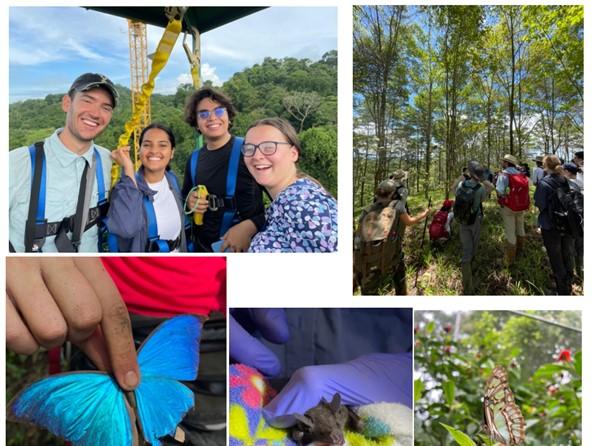
Participant, Sharvani Sivakumar (Girton), writes.
The Zoology department arranged a tropical field course in September 2022 to the Smithsonian Tropical Research Institute in Panama. This was a selective field course that gave us the opportunity to interact with researchers, gain exposure to tropical ecosystems, understand conservation issues and conduct independent experimentation and research.
The first week was spent exploring Gamboa – namely Pipeline Road (known to have the most diverse avian fauna in Central America), Agua Salud Project, and Parque Metropolitano where we got to ride on the Canopy Crane. We stayed overnight at Barro Colorado Island which is the most intensively studied tropical rainforest site in the world. After getting a taste of the biodiversity as well as the types of research being conducted in Panama, we were tasked with coming up with our own research project which would contribute to our final Part II mark. In the second week we collected data for investigating thermal buffering and species diversity in butterflies, moths, and dung beetles. Unlike enclosures in zoos, we were able to witness flora and fauna in their natural habitat and get up close to them, guided by experts in the field. An incredibly passionate ornithologist, Daniel Field, was a demonstrator on the trip and under his guidance, I not only became better at birding but also came to enjoy it. Overall, the Panama trip was an unforgettable learning experience for all who attended. Whether all of us remain in science or not, the beauty and the diversity of the tropical rainforest and the skills we developed in learning how to study and appreciate it would help us thrive in any field of further study.
Clockwise from top left: riding the Canopy Crane in Parque Metropolitano; trip to Agua Salud Project; practising identification in the butterfly garden; observing bat research; beautiful Morpho rainforest butterfly.
Also see @CamZoologyField on Instagram
Photo credits: Sharvani Sivakumar
